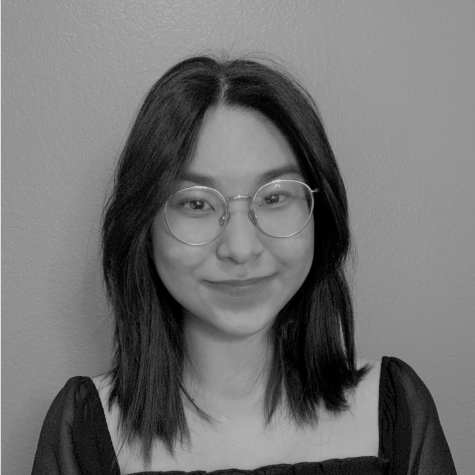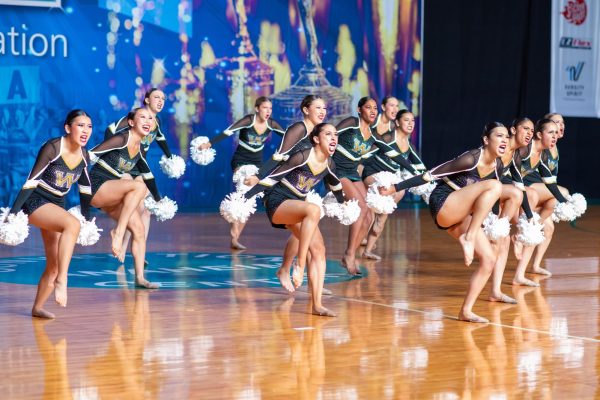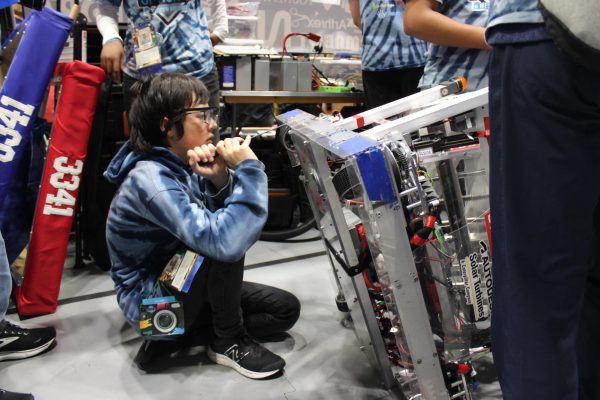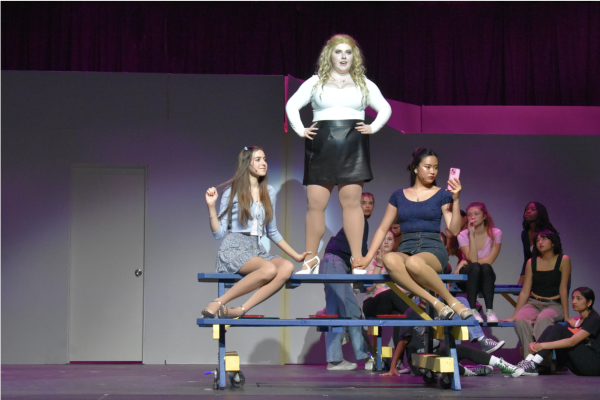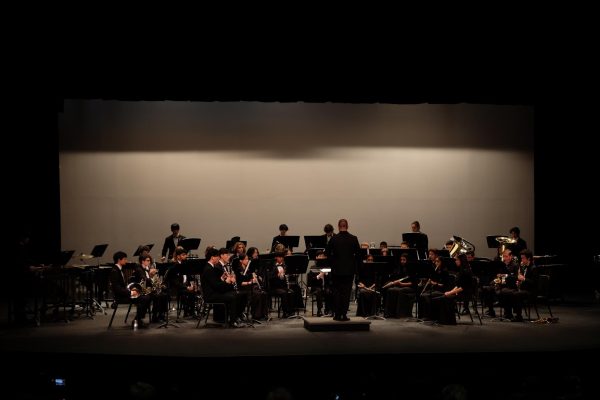Student activists advocate for Black Lives Matter movement
June 9, 2020
As the Black Lives Matter movement ripples across America, people all over the world have been continuing a centuries-old struggle. As activists begin fighting for governmental reforms, each citizen has been made to re-evaluate whether their country’s laws are just.
As protests and riots make their way through San Diego, Westview students have been slowly coming to terms with their rapidly-changing community.
For many, this means stepping up in any way they know how.
Sophi Jacanin (12) hoped to help support the cause, so on May 30, she and her mother decided to head downtown the next day for a peaceful protest. By the morning of May 31, Jacanin was on the road with her camera, face masks, and no idea what to expect.
“People need to know what’s right and what’s wrong, what’s real and what’s not, and the media doesn’t always cover everything that they should,” Jacanin said. “I wanted to see for myself and bring photos back to spread awareness of what’s happening.”
Jacanin is an aspiring photo-journalist, and said she believes her generation has a responsibility to set a precedent for the future. Whether that be documenting history or speaking up about injustice, she said, the youth can do it best.
“If we don’t do something, who will?” Jacanin said. “The people who are older [mostly] have their firm beliefs that they’re sticking with. But we learn, we adapt, and we know how to make change. We should get our voice out there.”
According to Melos Ambaye (11), teenagers can also use social media and online resources to their advantage. Ambaye herself has been spreading awareness on her Instagram account, sharing information on ways to help and articles about the cause.
“There is strength in numbers, and social media is one of the best ways to get a message out to and reach more and more people,” Ambaye said. “Awareness is the first step to generating change on a systematic level.”
Online petitions often take mere seconds to sign and all a student really needs is an email to successfully show their support. Anna Dai-Liu (11) said that most importantly, staying educated with the use of the internet can be crucial to making change.
“It’s important to see what exactly the police are doing, and what exactly is happening on the streets,” Dai-Liu said. “This helps us understand why the people are angered and why the people are so so passionate about this cause right now.”
Dai-Liu said that with a wide variety of media and quickly-accessible research, this kind of education is easier than ever before.
“We all have a limited perspective, and so it’s important to gain a more holistic view of what’s going on,” she said. “Social media has really proven useful these days. We can immediately see videos of what’s happening, and it’s not filtered through other people’s writing or biases.”
Jacanin recorded this exact kind of first-hand footage at the peaceful demonstration downtown. But she quickly discovered that not everyone welcomed the activists trying to use their voice.
The protestors, Jacanin said, were peaceful from start to finish. When a few people knocked over a large planter on Broadway, a group of strangers worked together to place it upright again. People of all ages, genders, and ethnicities were holding up signs and chanting for justice. There was a band playing “God Bless America” on saxophones and trombones.
But when Jacanin pushed her way to the front of the march on May 31, she was face-to-face with three rows of police officers in riot gear. And 15 minutes after she had arrived, the police got down on one knee and shot into the crowd with rubber bullets and flashbangs.
This was the first wave.
As the protestors ran back, Jacanin turned around to take a photo. The officer she was facing then shot her in the stomach with a rubber bullet the size of a small melon. Jacanin said she couldn’t breathe—through the pain, through the tear gas, through the chaos. Jacanin still has a large bruise on her stomach from the wound.
“It felt like the San Diego fog we get sometimes that’s so dense you can’t see or feel anything you do,” she said. “This happened five more times. The protestors would chant, the police would fire, and we would all run.”
Jacanin said she was moved by the passion of the protestors, many going back to the front of the march even after being beaten and shot at.
“There was not one reason for the police to shoot at us,” she said. “These were peaceful people speaking up for what they believe in, and the police did not handle it well at all. It was unacceptable.”
According to Jacanin, the privilege of being a Westview student and a North County resident often makes it easy to assume that problems like racism and police brutality are far-away issues. But while ignoring the problem is easy, she said, it’s also extremely harmful.
“It’s a big world, and our community at Westview is so small that issues like racism can just glaze over us unless we actually make an effort to see them,” Jacanin said. “We think, ‘It’s not affecting us, so why do we have to deal with it?’ But we do have to deal with it. We can’t just be in our own little world. We have to protect each other.”
Dai-Liu said that in a time period of extreme change and a lot of chaos, it can be brutally uncomfortable to acknowledge such a big problem close to home. Racism can be covert and perspectives can be hard to change. Still, she said, Westview students have a responsibility to make the effort.
“I get it, it’s uncomfortable, but we have to go through the uncomfortableness in order to get to a better place and have a better understanding,” Dai-Liu said. “Historically, oppression has continued in America for so long. The first step to changing that is learning how to talk about the problem in a comfortable way.”
According to Dai-Liu, Westview’s large percentage of Asian-American students can add complications to addressing racism locally. While Asian-Americans often face racism as a minority, Dai-Liu said, it is not in the same oppression as the black community faces.
And these convoluted layers of discrimination can make it easy to ignore the role that Asian-Americans play in perpetuating stereotypes and excusing biases.
“Racism is deeply ingrained into Asian cultures just as much as American, but here it’s much harder to acknowledge that,” she said.
Asian-Americans have a history of considering themselves the “model minority,” Dai-Liu said, meaning they conform mostly to white perspectives. Because of this, changing perspectives and seeing the bigger picture are crucial for a fuller understanding.
Dai-Liu urges Asian-American and white students alike to evaluate their biases that are passed down through generations.
“We’re privileged, and that makes it difficult to understand the gravity of racism [for others],” Dai-Liu said. “But we need to start having those conversations at home. We need to do our part to solve what’s going on right here in our community.”
According to Ambaye, every teenager can be proactive to help the cause. Teenagers should not feel satisfied simply doing the bare minimum, she said, and should do their best to take the extra step forward.
“It is important that teenagers really educate themselves on social issues so they can eventually vote and enact change,” Ambaye said. “Any teenager can do research and learn things. It isn’t enough to simply post [a hashtag] on your Instagram story.”
Jacanin said she hopes that the government is able to listen to what the people have to say. Reforming systematic racism and police brutality is a long journey, she said, but it’s about time that the country gets started on it.
“These are the dirty dishes of our country,” Jacanin said. “Somehow, some way, sometime soon, things need to change.”
Jacanin said that while this change hasn’t happened yet, the protests and unified activism have helped send the right message and take the first step. Ultimately, Dai-Liu said, the people have more power than they know. Standing in solidarity against the injustices of the world is something that she believes every person should contribute to.
“We are going to inherit this world,” Dai-Liu said, “And if we want to see a better world when we’re adults, then we have to fight for the change now.”


